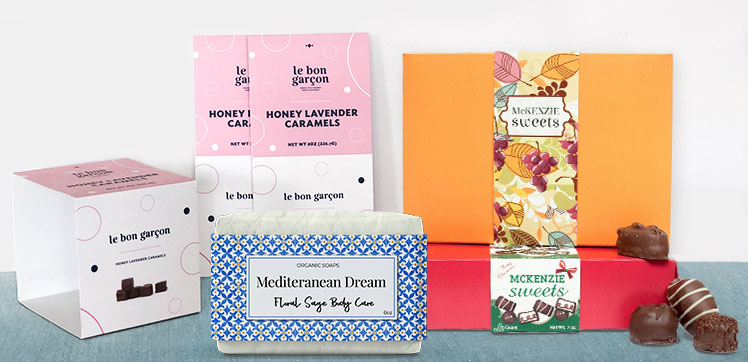Ensuring proper fit and incorporating protective features, you can create packaging sleeves that safeguard your products while enhancing their overall appeal and brand identity. To ensure your packaging sleeves are durable and protective, consider the following strategies:
- Material Selection
Choose sturdy materials like cardboard or corrugated material for your sleeves. These options provide excellent protection with cushioning layers, making them ideal for shipping and handling.
- Thickness and Quality
Select sleeves made from high-quality, thick materials like 100-lb paper. This premium paper stock is the same thickness as magazine paper, providing durability and protection for your products.
- Coating Options
Opt for gloss or matte lamination to add extra protection and durability to your sleeves. These coatings can help prevent scuffs, scratches, and moisture damage.
- Proper Fit
Ensure your sleeves are the right size to fit snugly around your products. Measure accurately and leave a bit of extra space for the tape area so the sleeve can slide on and off easily.
- Tamper-Evident Features
Add tamper-evident seals to your sleeves, especially for products like medications or perishable foods. This ensures the integrity of your products and gives customers peace of mind.
- Eco-Friendly Options
Choose eco-friendly materials for your sleeves, such as recycled paper or biodegradable polymers. These sustainable options are protective and appealing to environmentally conscious consumers.
How can I Customize Packaging Sleeves to Match My Brand?
To customize packaging sleeves to match your brand, consider the following strategies:
- Design Elements
Incorporate your brand’s logo, colors, and typography into the sleeve design. This creates a cohesive look that aligns with your overall branding. Use high-quality images and graphics to enhance visual appeal.
- Material Selection
Choose from materials such as eco-friendly kraft, cardboard, or premium paper. Each material offers different aesthetics and durability levels. For instance, kraft paper provides a rustic look, while glossy paper can make colors pop.
- Finishing Options
Utilize finishing techniques like gloss or matte lamination, embossing, or foiling to add texture and visual interest. These options can make your packaging more attractive and memorable.
- Size and Shape Customization
Select the appropriate size and shape for your packaging sleeves to ensure a perfect product fit. Custom sizes can enhance the presentation and functionality of your custom box packaging.
- Printing Techniques
Opt for high-quality printing methods to ensure your designs are vibrant and clear. Many services offer options for printing on one or both sides of the sleeve, allowing for more branding space.
- Incorporate Product Information
Use the sleeve to convey important product information, such as ingredients, usage instructions, or promotional messages. This not only informs customers but also reinforces your brand identity.
- Sustainable Options
Consider using biodegradable or recyclable materials for your packaging sleeves. This aligns with eco-conscious consumer preferences and enhances your brand’s reputation as environmentally friendly.
- Interactive Elements
Add QR codes or social media handles to encourage customer engagement. This can lead to increased interaction with your brand beyond the product itself.
12 Styles of Packaging Sleeves
The most common materials are paper, cardboard, kraft paper, and plastic. Sleeves allow for easy customization with printing, graphics, and branding. They are famous for food, cosmetics, retail, and promotional products.
- Paper Sleeve Packaging
It is lightweight and eco-friendly, made from paper. It is ideal for food items and easy to print for custom branding. - Cardboard Sleeve Packaging
Thicker and more durable than paper sleeves, they provide better protection and represent your brand well. They are used for food, cosmetics, and retail products. - Kraft Paper Sleeve Packaging
They are eco-friendly, strong, and durable. They add a natural, rustic look and are commonly used for food packaging. - Insulated Sleeve Packaging
Specially designed to maintain temperature. Used for food delivery or any product requiring temperature control during transit. - Belly Bands
A packaging sleeve that wraps around the middle of a product comes under belly bands. - Shrink Sleeve Labels
It has printed plastic sleeves that shrink to fit tightly around containers.
- Stretch Sleeve Labels
Elastic sleeves that stretch to fit containers of various sizes. - Tamper-Evident Sleeves
Include a seal to indicate if a product has been opened. - Promotional Sleeves
Used for promotional offers like free samples or multipacks. - Folding Carton Sleeves
They are made from folding carton material, often with a window cut-out. - Rigid Setup Boxes with Sleeves
Sturdy boxes with a separate sleeve that slides over the box. - Tuck-End Sleeve Boxes
Boxes with a sleeve that tucks into the bottom of the box.







